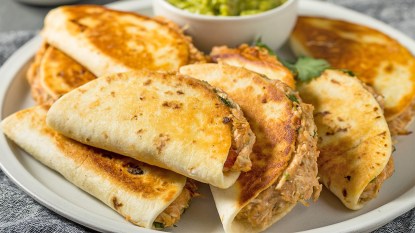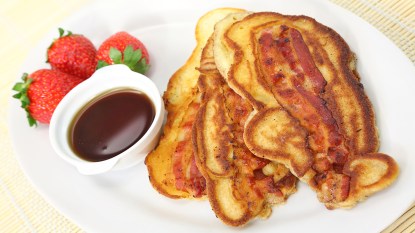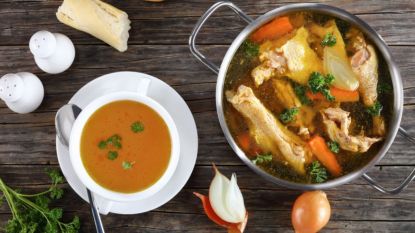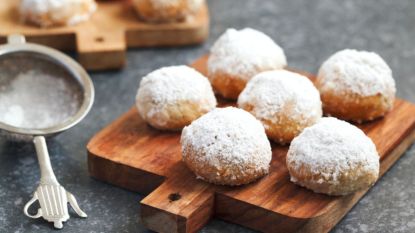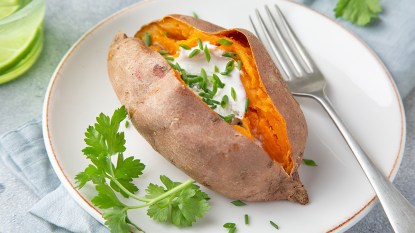This Trick for Making Perfectly Crispy Oven-Roasted Potatoes Couldn’t Be Any Easier
No extra ingredients necessary.
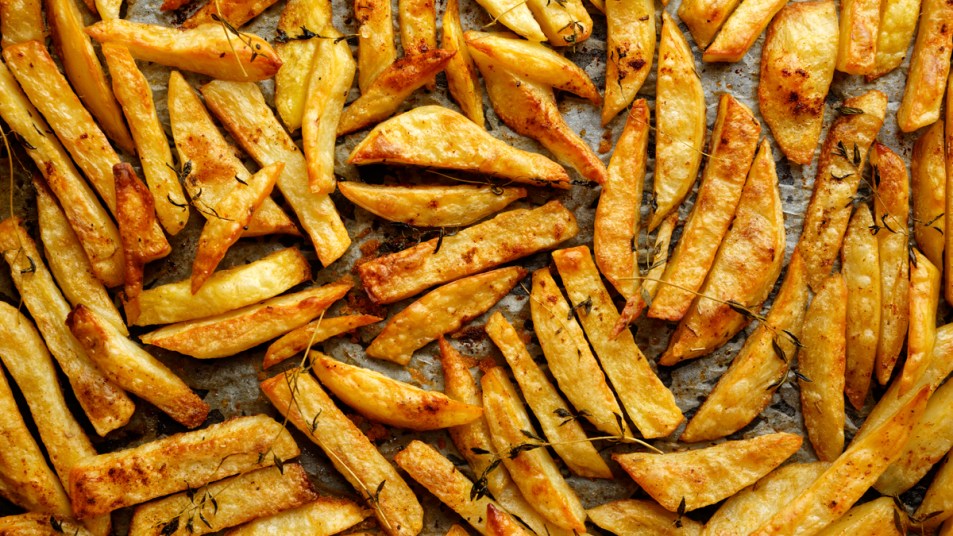
I’m a little bit obsessed when it comes to finding new delicious ways to prepare potatoes. The starchy spuds just bring so much joy with each bite! Whether you go with sweet, fingerling, Yukon, or russet, they all come with endless possibilities. So, you can imagine my excitement when I stumbled across a trick for making delightfully crunchy oven-roasted potatoes that are still light and fluffy inside.
The tip was tucked into another simple technique for flavorful spuds that was recently shared by the Daily Mail. While describing an Australian mom’s method of sprinkling her potatoes with French onion soup mix to make the savory side dish even more scrumptious, they included a recommendation from Australian consumer reviewers, CHOICE. Apparently, achieving a crispy potato outside and maintaining a soft inside is all about getting rid of as much moisture as possible after parboiling, or boiling them until they’re partially cooked. The best way to do that? Letting them cool down in your fridge or freezer before you pop them in the oven.
Boiling potatoes before roasting them is pretty common. The dense tubers can take forever to cook all the way through, so this helps speed things along. I’ve seen suggestions for dipping potatoes into cold water immediately after boiling in order to stop that part of the cooking process before roasting, but that seems to be the opposite of what CHOICE recommends.
Obviously, I had to try it out myself. I sliced a couple spuds into thick fries and set them in a pot of water. Once it reached a boil, I let them cook for about 10 minutes — checking with a fork every now and then to see how soft they were getting. When they were the right level of soft-but-not-too-soft, I scooped them out, tossed them in a bowl, and “bunged” (as they apparently say in Australia) them into my freezer for 10 minutes.
The potatoes were still warm when I transferred them to a baking pan, but also definitely seemed to be more dry than I’m used to seeing before I roast them. I hoped that meant they would indeed get that extra crisp factor while they cooked.
I covered them in a bit of of olive oil and reluctantly stopped myself from seasoning them with plenty of salt right then, as I normally would. This trick claims that the salting at the start of the roasting process (it’s fine to add a pinch of salt to water before boiling though) will bring out any hidden moisture and completely undo all the hard work you (or your freezer, anyway) put into drying them out.
I roasted them at 350 degrees Fahrenheit for about 20 minutes, then gave them a toss and let them cook for another 20 minutes. The outer layer looked like it was crisping up nicely, but hadn’t quite gotten there yet. I decided that was a good time to add salt and other seasonings, and gave them another 10 minutes in the oven.
It might be a lot more effort than I would have put into just grabbing a bag of frozen fries from the grocery store, but letting fresh potatoes chill down in the freezer for a few minutes after parboiling was totally worth it.
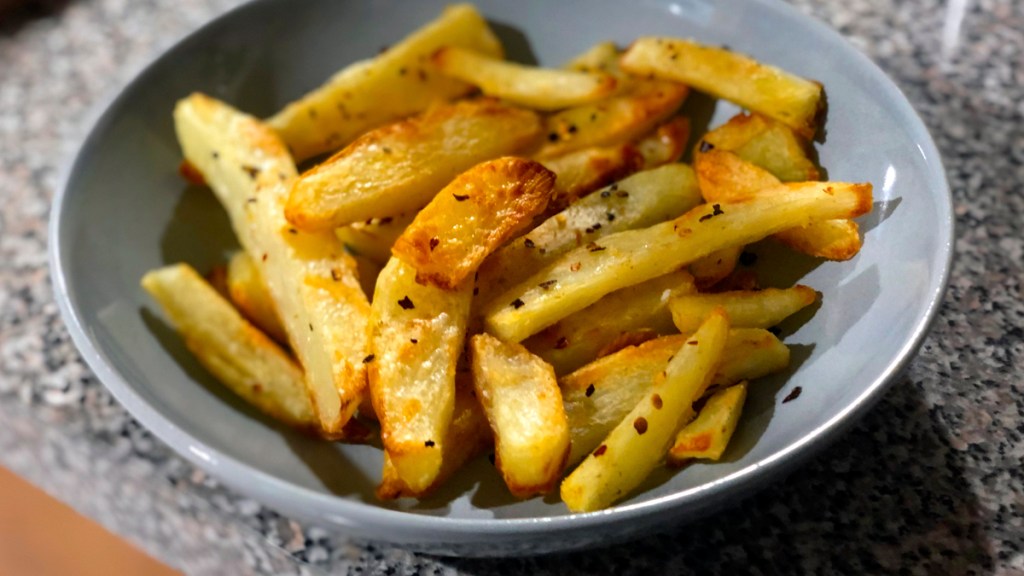
Is there anything more beautiful than a pile of potatoes stacked up on a plate? Some of the spuds got a little crispier than others (I probably could have tried harder to make sure they were all closer to the same size for a more uniform roast), but none of them disappointed. I was hooked on first bite!
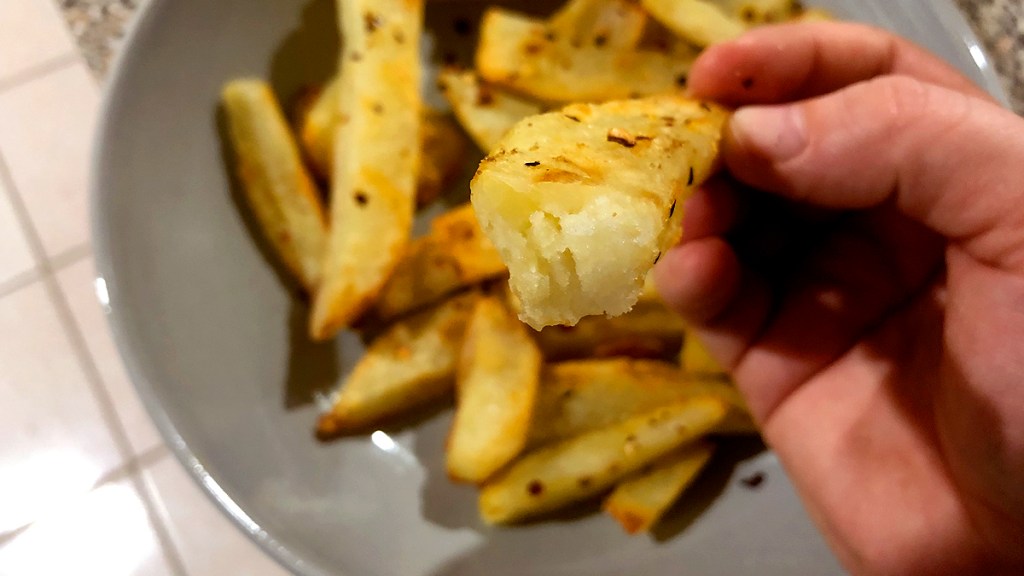
I’ve only ever really had this perfect balance of crispy outer layer and fluffy inside from potatoes at fast food restaurants or deep-fried to achieve the same result. I couldn’t be happier to have found a healthier way to enjoy oven-roasted spuds even more than I already do!
Give this super easy technique a try the next time you’re craving potatoes with your meal.


